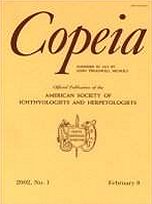The appendicular skeletal elements in 32 species from all 23 extant genera of amphisbaenians were surveyed via the preparation and study of radiographs, dry skeletons, and cleared-and-stained specimens. Here I report on the presence or absence of those elements, describe their morphology, and make comparisons to several other limbless or limb-reduced squamate taxa that have previously been suggested as close relatives to amphisbaenians. Variability found here in the appendicular skeleton provides a new source of character data for ongoing phylogenetic studies of the group. Comparisons of these elements to those found in potential squamate sister groups indicate that some amphisbaenians share plesiomorphic similarities with limbed squamates such as gymnophthalmid lizards, whereas others share only absence or reduction features with other limbless or limb-reduced squamates, such as dibamid lizards and snakes. This pattern is considered potentially inconsistent with previously proposed hypotheses of amphisbaenian sister groups within squamates. For the pectoral girdle, every stage of reduction—including complete loss—occurs among lizards, amphisbaenians, and snakes. However, the pelvic girdle is never completely lost in lizards or amphisbaenians regardless of the degree of limb reduction or loss; all these taxa retain at least the ilium, and this is also true of most basal snakes. These pelvic girdle elements are variously modified among these taxa, a fact that, together with their widespread persistence, suggests both different patterns of reduction among higher taxa and possible new functional roles beyond the primitive one of supporting the hind limb.
How to translate text using browser tools
1 August 2002
Appendicular Skeleton in Amphisbaenians (Reptilia: Squamata)
Maureen Kearney
ACCESS THE FULL ARTICLE





